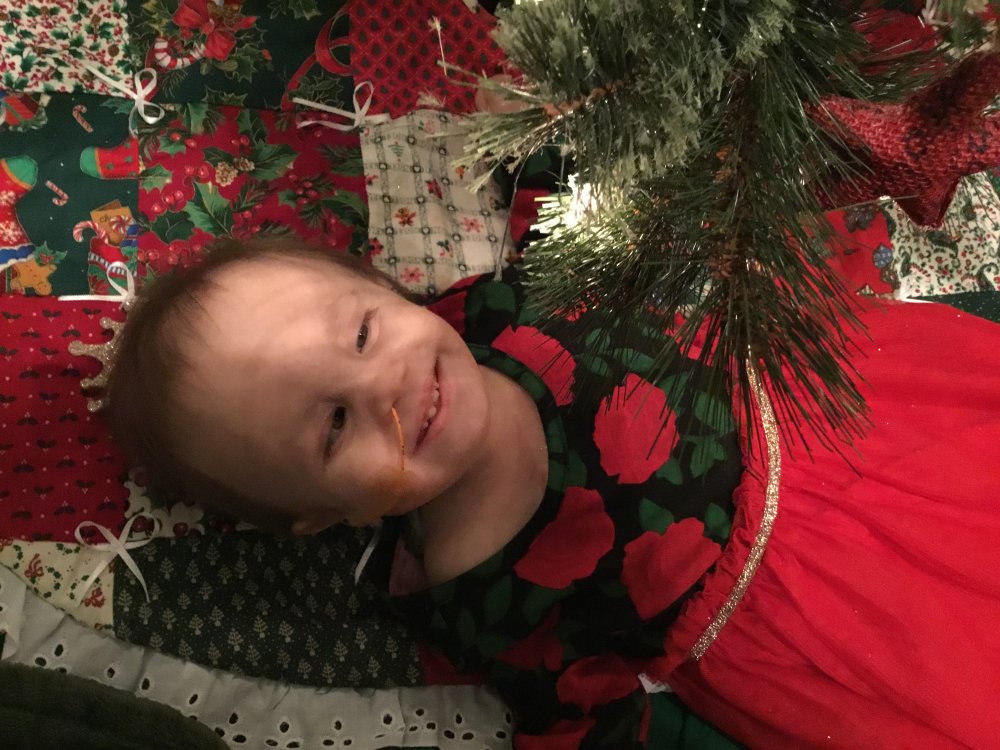
Sanibel
-
Posts
1,275 -
Joined
-
Last visited
-
Days Won
5
Content Type
Profiles
Forums
Events
Classifieds
Posts posted by Sanibel
-
-
2 hours ago, Spawn of Bon said:
Hey everybody! I know it’s been a hot minute since you’ve seen pics of Faith! This will get your smile tanks full again! Also we have ONE MORE CHEMO TO GO! It’s on her birthday of course but hey it’s a great birthday present to be cancer free! So we will take it! After all the poor kid has been through she did loose 2 1/2 pounds, her base weight prior to all this was 17.5, but with the help of the NG tube she is back up to 16.5lbs! Yay! Sorry for late posting but here is Christmas and New Years!
The greatest gift you have ever received is under the tree! ❤️❤️❤️
- Spawn of Bon and Bon
-
 1
1
-
 1
1
-
-
-
-
Because of the deer, I grow in large pots on my porch. One was too close to the edge and the deer walked up and ate in anyhow! The others, I moved way back and now the chipmunk stripped three of all of the leaves. I have four left and, knock on wood, they are doing very well! I was disappointed to have lost both of my current tomatoes to the animals and hope that your plant sale offers them again next year!
-
This is interesting! Ant colonies farm them!
EcologyEdit
Bloodroot is one of many plants whose seeds are spread by ants, a process called myrmecochory. The seeds have a fleshy organ called an elaiosome that attracts ants. The ants take the seeds to their nest, where they eat the elaiosomes, and put the seeds in their nest debris, where they are protected until they germinate. They also benefit from growing in a medium made richer by the ant nest debris.
The flowers produce pollen, but no nectar. Various bees and flies visit the flowers looking in vain for nectar, for instance sweat bees in the genera Lasioglossum and Halictus, cuckoo bees in the genus Nomada, small carpenter bees (Ceratina), and bee flies in the genus Bombylius. Some bees come to collect pollen, including mining bees (Andrena), which are the most effective pollinators.[7][8]
The bitter and toxic leaves and rhizomes are not often eaten by mammalian herbivores.[8]
-
That is odd, but pretty. It looks like purple broccoli!
-
-
-
-
-
-
-
-
14 hours ago, steelnut said:
We do it all and make sure to rotate every year, always have. It's just stumping us!
I think it is too much rain...this year and last.
-
-
-
-
My great grandmother was in her late 30's and her 18 year old son (Gelnett) both died in this pandemic. They are buried in the Knoxdale Cemetery. Walking through that cemetery, I was shocked by the number of tombstones that had 1918 as the date of death.
-
Oh, what a sweet little face!
-
-
I am thinking slugs since it has been so damp lately. Bury a couple of plastic cups level with the soil.. Put a little beer in the bottom. They do their damage at night so check in the morning and see if you have drowned any. The dampness also draws earwigs and pill bugs. Some birds will also just peck a hole and move on. It is a frustrating problem to solve until you can figure out what the culprit is! My money is on the slugs though. I had the same problem so now I grow them in big pots and no more holes!
-
It sure looks like a wild ageratum ( blue mist flower) and they are a native Pa wildflower. Is this a current photo? I ask because I normally see these blooming in late summer so I am not sure. The leaves are right and the flower is right though!
-






Meet my granddaughter Faith Marie
in Message Place
Posted
Happy Birthday beautiful baby! 🎂❣